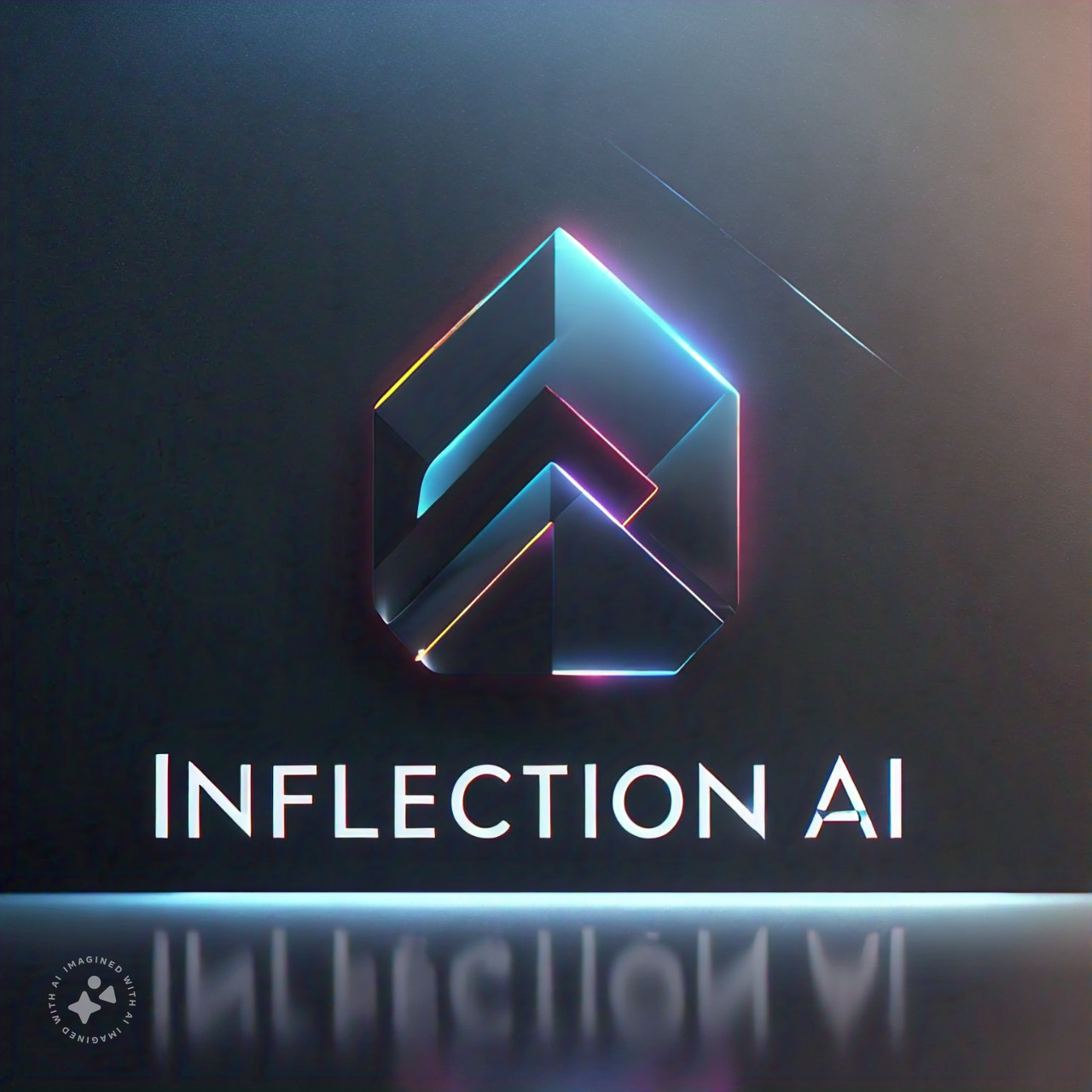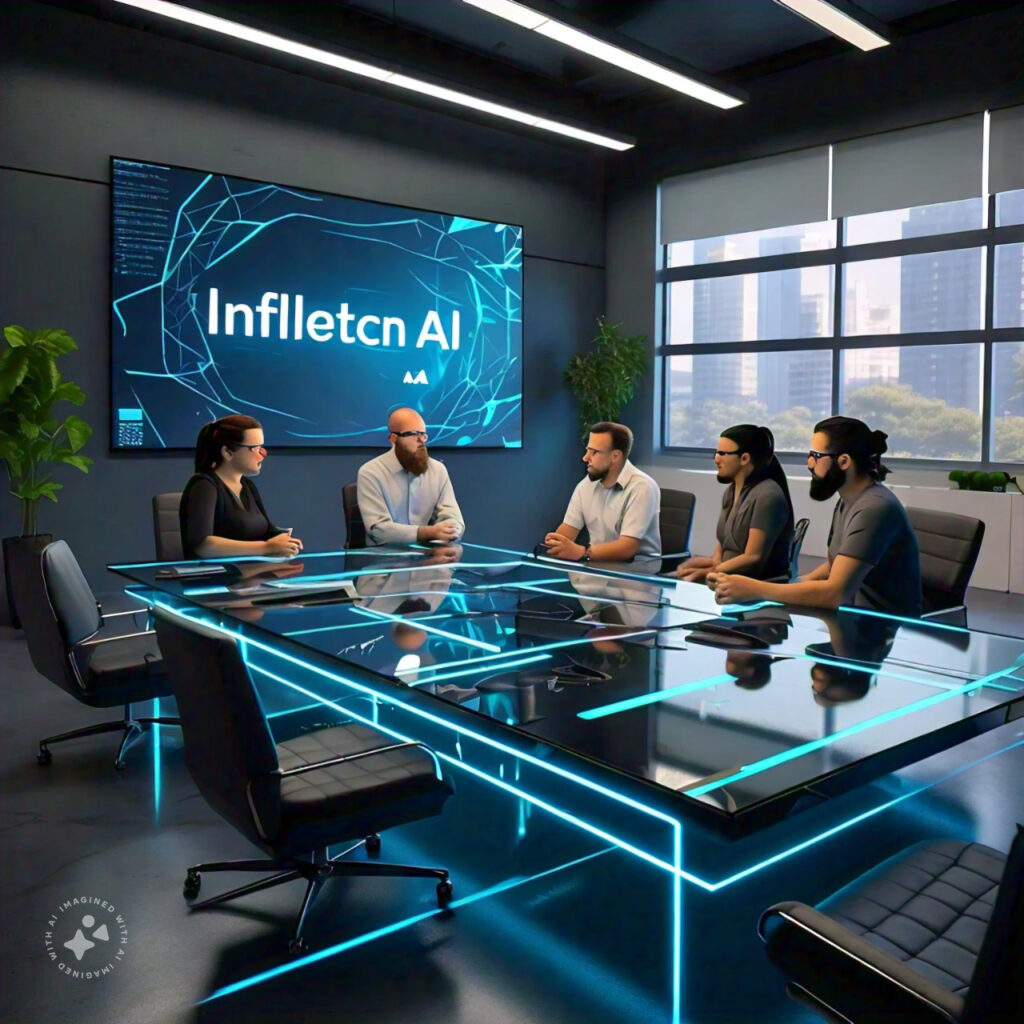
Inflection AI! Imagine a world where machines could understand and respond to our every word, engaging in conversations that
feel more like chatting with a friend than interacting with a computer. This future is no longer a distant dream; it's becoming a reality thanks to the groundbreaking field of Conversational AI.
 Caption: A glimpse into the future of AI: The Inflection AI workspace.
Caption: A glimpse into the future of AI: The Inflection AI workspace.As we move closer to this future, it begs the question: How will the lines between human and machine blur, and what implications will this have for our society?
Remember the frustration of navigating endless phone menus, trying to reach a human agent? Conversational AI is poised to revolutionize customer service by providing instant,
personalized assistance, just like a helpful friend would. Imagine a world where your virtual assistant can understand your needs, anticipate your questions, and even offer recommendations based on your preferences.
According to a recent report by Grand View Research (2023), the global Conversational AI market size was valued at USD 10.4 billion in 2022 and
is expected to grow at a compound annual growth rate (CAGR) of 23.7% from 2023 to 2030.
The dream of machines that can converse with humans has a long history. As early as the 1950s, Alan Turing, a pioneering computer scientist, proposed the Turing Test,
a thought experiment that measured a machine's ability to exhibit intelligent behavior equivalent to, or indistinguishable from, that of a human (Wikipedia, 2024).
The first chatbot, ELIZA, was developed in 1966 by Joseph Weizenbaum and used pattern matching techniques to simulate conversation with a psychotherapist (Wikipedia, 2024).
While these early attempts were limited, they laid the groundwork for the sophisticated Conversational AI systems we see today.
Conversational AI Market Trends
In a significant development, Inflection AI, a pioneer in Conversational AI research, recently announced the launch of Pi, a cutting-edge language model designed to facilitate more natural and engaging conversations.
This breakthrough marks a major step forward in the quest for truly human-like AI.
Inflection AI's commitment to developing Conversational AI that can seamlessly integrate into our daily lives is evident in their focus on providing personalized and empathetic responses.
By leveraging advanced machine learning techniques, Inflection AI is able to train Pi to understand and respond to a wide range of prompts and questions,
making it a valuable tool for tasks such as customer service, content creation, and personal assistance.
Demystifying Inflection AI: What is it and How Does it Work?
Inflection AI is a type of artificial intelligence that enables machines to communicate and interact with humans in a natural, human-like language.
It's a powerful tool that can be used to create chatbots, virtual assistants, and other applications that can engage in meaningful conversations with people.
 Caption: The human element behind AI technology.
Caption: The human element behind AI technology.At its core, Conversational AI relies on two key technologies:
- AI Language Models: These models are trained on massive datasets of text and code, allowing them to understand and generate human language. Popular examples include OpenAI's GPT-3 and Google's BERT. 1. AI Evolution: What is a Large Language Model? - St. John's University www.stjohns.edu 2. What is ChatGPT, DALL-E, and generative AI? | McKinsey www.mckinsey.com
- Natural Language Processing (NLP): This field of computer science focuses on the interaction between computers and human language. NLP techniques are used to extract meaning from text, identify entities (like people, places, and things), and generate coherent responses. 1. What is NLP? - Natural Language Processing Explained - AWS aws.amazon.com
Infographic
Customer Service
24/7 availability, personalized support
Content Creation
Automated generation, personalization
Education
Personalized learning, 24/7 tutoring
Healthcare
Appointment scheduling, symptom checking
Personalization
Tailored responses, remembering preferences
Innovation
Cutting-edge AI models, continuous improvement
Ethics & Security
Responsible development, data protection
Future Growth
Expanding applications, market potential
How it Works:
- Input: A user types or speaks a message.
- Processing: The Conversational AI system uses NLP techniques to understand the intent and context of the message. 1. What are NLP chatbots and how do they work? - Zendesk www.zendesk.com
- Response Generation: The AI Language Model generates a response based on the input and the system's knowledge. 1. AI: What is RAG ? - DEV Community dev.to
- Output: The response is presented to the user in a natural language format.
Visual Representation:
Opens in a new window www.researchgate.net
flowchart illustrating the process of Conversational AI, including input, processing, response generation, and output
Historical Facts:
- Early Efforts: The concept of machines that could understand and respond to human language dates back to the 1950s. Alan Turing, a pioneering computer scientist, proposed the Turing Test in 1950, which challenged machines to convince humans that they were also human. 1. The Turing Test (Stanford Encyclopedia of Philosophy) plato.stanford.edu
- ELIZA: One of the earliest chatbots, ELIZA, was developed in the 1960s by Joseph Weizenbaum. While it was relatively simple, ELIZA demonstrated the potential for computers to engage in basic conversations. 1. 3 The ELIZA Effect: Joseph Weizenbaum and the Emergence of Chatbots - Oxford Academic academic.oup.com
- Advances in NLP and Machine Learning: The development of more advanced NLP techniques and machine learning algorithms in recent decades has significantly improved the capabilities of Conversational AI systems.
By understanding these foundational concepts, you can better appreciate the complexity and potential of Conversational AI.
Inflection AI: A Leader in Conversational AI Innovation
Inflection AI is a pioneering company dedicated to developing Conversational AI that can engage in natural, human-like conversations across a wide range of applications.
Their mission is to create AI that can truly understand and respond to human language in a way that is both informative and empathetic.
 Caption: The future of AI: Inflection AI products.
Caption: The future of AI: Inflection AI products.Pi Chatbot: A Conversational AI Breakthrough
One of Inflection AI's most notable achievements is the development of Pi, a powerful chatbot that has garnered significant attention for its ability to hold engaging and informative conversations.
Pi is designed to be a personal AI assistant that can provide companionship, answer questions, and offer advice on a variety of topics.
Key Capabilities of Pi:
- Natural Language Understanding: Pi can understand and interpret complex language structures and nuances, making it capable of engaging in meaningful conversations on a wide range of subjects.
- Empathetic Responses: Pi is designed to be empathetic and responsive to users' emotions, providing comfort and support when needed.
- Knowledge Base: Pi has access to a vast knowledge base of information, allowing it to provide informative and accurate answers to a wide range of questions.
Conversational AI Timeline
1950:Turing Test Proposed
Alan Turing proposes the Turing Test to measure machine intelligence.
The Turing Test, proposed by Alan Turing in his paper "Computing Machinery and Intelligence," became a foundational concept in AI. It suggests that a machine's ability to exhibit intelligent behavior equivalent to a human could be a measure of its intelligence.
1966:ELIZA Chatbot Created
Joseph Weizenbaum develops ELIZA, one of the first chatbots.
ELIZA, created by Joseph Weizenbaum at MIT, was one of the first programs capable of natural language processing. It simulated conversation by using pattern matching and substitution methodology, famously mimicking a Rogerian psychotherapist.
1980s-90s:Expert Systems and NLP Advances
Development of expert systems and progress in Natural Language Processing.
This period saw the rise of expert systems, AI programs designed to solve complex problems by reasoning through bodies of knowledge.
https://justoborn.com/inflection-ai/
No comments:
Post a Comment